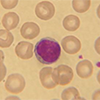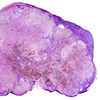Alpha Subunits (ASU) ASU
Specimen Volume
1 mL blood (min 500 uL serum)Specimen Transport
First Class Post
Sample Preparation
Turnaround Time
25 working days (5 weeks)Sample Processing In Laboratory
No special requirements
Sample Stability
5 days at 4°C or 6 months at -20°CGeneral Information
TSH, LH and FSH are glycoproteins composed of two sub-units termed α and β. The intact glycoproteins and their common α sub-unit (ASU) are secreted in a pulsatile manner in normal subjects. The majority of pituitary adenomas produce pathological symptoms resulting from hypersecretion of the hormone by a tumour. However, up to 30% of such tumours have no such pathology and have been termed clinically non-functioning. It has been reported that a large number of such non-functioning adenomas may synthesise and secrete intact glycoprotein hormones or their sub-units.
Serum ASU may also be elevated in patients with functioning pituitary tumours such as the rare thyrotropinmas and gonadotropinomas. Measurement of ASU may be used for the detection and monitoring of these adenomas.
It may also be elevated in primary hypogonadism, renal failure and primary thyroid disease and interpretation of the results should take these factors into account.
ASU may be elevated in gastro-entero-pancreatic tumours and in particular it may be useful in the investigation of anomalous thyroid function tests, where thyrotropinoma, thyroid hormone resistance and analytical interference have all to be considered.
Patient Preparation
No special patient preparation required. Sample must be collected into yellow or red top container only.
Notes
Please send clinical details including results of other pituitary hormone tests.
Reference Range
- Adult males and pre-menopausal females: <1.0 IU/L
- Post-menopausal or mid-cycle females: <3.0 IU/L
Pregnancy - there is a 0.1% cross reaction with hCG resulting in very high ASU results in pregnancy.
Results should be interpreted along with the serum LH, FSH and TSH results and renal function tests.
Source of Reference Range
In house validationSpecifications
-
EQA Status:
No EQA Scheme - sample exchange in place
- EQAS Scheme: No








